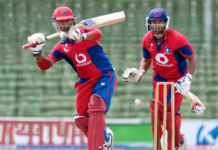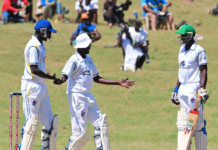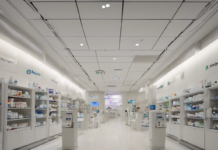Introduction
Navratri is a vibrant and significant Hindu festival celebrated with great zeal and enthusiasm across India and by the Indian diaspora around the world. The word ‘Navratri’ translates to ‘nine nights’ in Sanskrit, and the festival spans over nine nights and ten days. It symbolizes the triumph of good over evil and is dedicated to the worship of the Hindu goddess Durga and her various incarnations.
The Significance of Colors in Navratri
Colors play a vital role in the celebrations of Navratri. Each day is associated with a specific color and deity, and devotees traditionally wear clothes in these colors to mark the occasion. The colors vary each day, and each hue symbolizes different qualities and aspects of the goddess being worshipped. It is believed that wearing the designated color can attract positive energies and blessings from the deity of that day.
Color Symbolism in Navratri
- Day 1 – Grey: The first day is dedicated to Shailputri, who is associated with the color grey. Grey symbolizes strength and power.
- Day 2 – Orange: The second day is dedicated to Brahmacharini, who is associated with the color orange. Orange represents positivity and energy.
- Day 3 – White: The third day is for Chandraghanta, associated with the color white. White signifies peace and serenity.
- Day 4 – Red: The fourth day honors Kushmanda, linked to the color red. Red symbolizes action and vigor.
- Day 5 – Royal Blue: The fifth day celebrates Skandamata, associated with royal blue. Royal blue represents stability and depth.
- Day 6 – Yellow: The sixth day venerates Katyayani, associated with the color yellow. Yellow symbolizes happiness and brightness.
- Day 7 – Green: The seventh day pays tribute to Kalratri, who is linked to the color green. Green signifies growth and harmony.
- Day 8 – Peacock Green: The eighth day is dedicated to Maha Gauri, associated with peacock green. This color represents freshness and new beginnings.
- Day 9 – Purple: The ninth day celebrates Siddhidatri, who is linked to the color purple. Purple symbolizes luxury and spirituality.
Celebrating Navratri with Colors
During Navratri, people not only dress in these vibrant colors but also decorate their homes, temples, and even public spaces in these hues. These colors create an aura of festivity and help in invoking the blessings of the goddesses being worshipped. Rangoli, a traditional art form where intricate patterns are created on the floor using colored powders, flowers, or rice, is a common sight during Navratri.
Noteworthy Navratri Traditions
Apart from dressing in specific colors, Navratri is also marked by fasting, dancing, and communal celebrations. The festival is known for its energetic and colorful Garba and Dandiya Raas dances, where people come together to dance, sing, and celebrate. These dances are not only a way to honor the goddess but also a way to socialize and have fun with loved ones.
Tips for Celebrating Navratri with Colors
- Plan your outfits in advance: To truly immerse yourself in the spirit of Navratri, plan your outfits according to the color of the day. You can mix and match different garments to create a vibrant and festive look.
- Experiment with accessories: If you do not have the exact color outfit, you can always accessorize with items like scarves, jewelry, or footwear in the designated color.
- Involve your family: Encourage your family members to participate in the color coordination. You can all dress in the same color or mix and match to create a harmonious look.
- Decorate your space: Use colorful drapes, cushions, and decorations in the specified colors to infuse your home with the festive spirit of Navratri.
- Engage in community activities: Join Garba and Dandiya Raas events in your community to experience the joy and energy of traditional Navratri dances.
FAQs (Frequently Asked Questions)
- Why are colors important in Navratri?
-
Colors play a significant role in Navratri as each hue is associated with a specific goddess and symbolizes different qualities to attract positive energies.
-
Can I wear different shades of the designated colors?
-
Yes, you can wear various shades of the designated colors to suit your style and preferences while still honoring the tradition.
-
What if I don’t have the specified color outfit for a particular day?
-
You can always accessorize with items like scarves, jewelry, or footwear in the designated color to participate in the color traditions of Navratri.
-
Are there specific rituals to be followed during Navratri?
-
Apart from dressing in specific colors, people observe fasting, visit temples, participate in prayers, and engage in traditional dances like Garba and Dandiya Raas.
-
How is Navratri celebrated in different regions of India?
-
Navratri is celebrated diversely across India with unique customs and traditions. In some regions, the festival is marked with elaborate processions and events, while in others, it is more subdued and focused on prayer and fasting.
-
What is the significance of Garba and Dandiya Raas in Navratri?
-
Garba and Dandiya Raas are traditional folk dances performed during Navratri to honor the goddess and celebrate the triumph of good over evil. These dances are a way to express joy, unity, and devotion.
-
How can I involve children in Navratri celebrations?
-
You can engage children in Navratri by teaching them about the significance of the festival, involving them in color coordination, and encouraging them to participate in dances and cultural activities.
-
Are there any traditional sweets or dishes associated with Navratri?
-
Yes, there are various dishes prepared during Navratri using ingredients allowed during fasting. Some popular sweets include Sabudana Khichdi, Kuttu Ki Puri, and Singhare Ke Atte Ka Halwa.
-
Can non-Hindus participate in Navratri celebrations?
-
Navratri is a festival that celebrates cultural diversity and unity. Non-Hindus are welcome to participate in the festivities, dances, and rituals to experience the vibrant traditions and values of the festival.
-
How can I make my Navratri celebrations eco-friendly?
- You can make your Navratri celebrations more sustainable by using natural colors for Rangoli, opting for eco-friendly decorations, and avoiding single-use plastic products during the festival.





